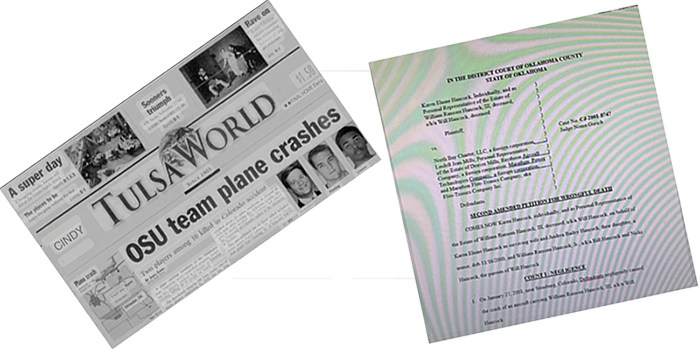Struggling with insurance negotiation injury case? Here’s how to win

Did you know that over 60% of personal injury claims are settled out of court, yet only a shocking 30% of people report being satisfied with their settlement amount? If you’re facing the daunting road of an insurance negotiation injury case, you’re not alone—and the difference between a disappointing offer and a fair settlement could come down to what you do next. This comprehensive guide delivers the know-how professionals use to succeed. Whether you’re at the start of your claim, considering legal help, or simply unsure what your case is worth, the steps below will help you get the compensation you deserve. Startling Facts: How Insurance Negotiation Impacts Your Injury Case “Over 60% of personal injury claims are settled out of court, but only 30% of individuals report being satisfied with their settlement amount.” The negotiation process can be the most critical stage of any injury case. Insurance companies know this and use seasoned adjusters trained to protect their bottom line, not yours. This means your financial recovery often hinges on how well you navigate these crucial talks. Many claimants, unsure of their rights or what constitutes a fair settlement, make mistakes that limit what they can recover. Understanding how insurance negotiation really works determines if you’ll walk away secure or shortchanged by thousands. In this article, you’ll discover the inside track to maximize your injury claim. From understanding what personal injury law demands, to crafting a demand letter that cannot be ignored, each section breaks down the exact moves experienced negotiators and attorneys take behind the scenes. You’ll also learn practical tips, common pitfalls, and the precise moments when partnering with a professional can make all the difference. What You’ll Learn About Insurance Negotiation Injury Case Success The key stages of the insurance negotiation injury case process Critical mistakes to avoid when negotiating with insurance companies How to evaluate if your injury claim is worth pursuing Expert tips to strengthen your personal injury claim When to contact an injury lawyer for maximum results Understanding the Basics: What Constitutes an Insurance Negotiation Injury Case Before diving into the negotiation process, let’s get clear about the foundation. An insurance negotiation injury case arises when you’ve suffered harm due to an accident or another party’s negligence, leading to an injury claim filed with an insurance company. These claims are the starting point for seeking compensation for your medical expenses, lost income, and pain and suffering. Not all injury claims are created equal. Some involve auto accidents, workplace mishaps, or slips and falls. What unites them is the need to prove liability (fault), document damages (like lost wages or medical bills), and support your claim with compelling evidence. At its core, handling a personal injury claim means engaging in a careful dance with insurers who are professionally trained to minimize payouts. Mastering this dance dramatically enhances your chance of winning a fair recovery. Defining Personal Injury and Insurance Claim A personal injury refers to physical or psychological harm caused by another’s negligence, think car crashes, slip and falls, or dog bites. When these events occur, you’re entitled to pursue compensation through an insurance claim. This process involves reporting the accident, gathering medical documentation, and seeking reimbursement for economic damages (like medical bills and lost wages) as well as non-economic harms (pain, suffering, emotional distress). Successful cases involve clear proof that shows how your injury directly stems from the incident in question. The heart of any injury case is establishing both liability and the true extent of damages. Insurance companies will scrutinize every aspect—from police reports to physical therapy receipts to determine responsibility and the amount they must pay. Understanding the distinction between insurance claim types, applicable injury law, and the nuances of personal injury cases arms you with the facts you need to go toe-to-toe with major insurance players. The Injury Law Foundation: Rights and Obligations Navigating an insurance negotiation injury case starts with knowing your legal rights. Injury law is designed not only to compensate victims for out-of-pocket losses but also to restore their quality of life after an accident. The law gives you the right to claim compensation from an at-fault party’s insurer and makes it illegal for companies to act in bad faith—such as ignoring your claim or offering a clearly unreasonable sum. But these legal protections only help if you actively use them in your favor. Equally important are your obligations. You must promptly notify the insurer after an incident, supply full documentation, and cooperate with accident investigations. Failing to meet these standards (like providing incomplete records or missing deadlines) can undermine even the strongest personal injury claim. A good grasp of personal injury law means you can build your case around proven facts, anticipate insurance company tactics, and overcome legal hurdles that could otherwise delay or derail your settlement. Overview of Injury Law and Its Impact on Injury Cases Injury law covers everything from the legal definition of negligence to the types of damages you can claim in an injury case. It influences everything your insurer will consider, such as contributory negligence (if you’re partly at fault), statutes of limitation (how long you have to sue), and the standards for proving pain and suffering. A basic misunderstanding of these laws can result in undervaluing your personal injury claim, settling for less, or even forfeiting your right to compensation altogether. By understanding the core principles of injury law, you equip yourself to prepare strong evidence, counter common insurance company arguments, and protect your interests. Whether you’re managing an injury claim yourself or working in tandem with an injury lawyer, knowing the law means you’ll ask the right questions and avoid being blindsided during settlement negotiations. The Role of Insurance Companies in Your Injury Case Insurance companies play a central role in every insurance negotiation injury case. Their goal is straightforward: resolve claims quickly and at the lowest possible cost. To succeed, you must understand their methods and motivations. From the moment a claim is filed, the insurer
How Insurance Companies Calculate Settlements and What They Don’t Tell You

Did you know that over 95% of all personal injury cases settle before trial, but the actual process by which insurance companies calculate your injury claim value is far more complex—and secretive—than you might imagine? If you or a loved one has suffered injuries and are facing a negotiation with insurers, understanding these hidden tactics can be the single most important step in maximizing your settlement. Shocking Insights: The Hidden World of Insurance Negotiation Injury Case Settlements “Over 95% of all personal injury cases settle before trial, yet the way insurance companies assess your injury claim is nothing like you expect.” For most injury victims dealing with an insurance negotiation injury case, the settlement process is a mysterious and, at times, frustrating journey. Many imagine a fair and balanced system, but in reality, insurance companies deploy advanced tactics and data-driven formulas to minimize settlements and maximize their own profit margins. You might expect compassion and transparency, but adjusting a personal injury case is driven primarily by numbers, policies, and expert negotiators trained to protect the insurer’s interests. Insurance companies rarely reveal the true methods they use when evaluating your injury claim. Instead, they count on your lack of experience and knowledge of injury law and the inner workings of settlement negotiations. This is why understanding what happens behind closed doors, knowing your claim’s true worth, and applying the right counter-tactics are essential for anyone hoping to get a fair settlement amount. What You’ll Learn About Insurance Negotiation Injury Case Strategies What goes on behind closed doors during settlement negotiations How insurance companies value your personal injury case Key negotiation steps for maximizing your injury claim The role of personal injury lawyers and injury law in settlement discussions Understanding Insurance Negotiation Injury Case Fundamentals What Is an Injury Case: Definitions in Personal Injury Law At its core, an injury case is a legal dispute that arises when one person suffers harm from an accident or injury and someone else might be legally responsible. Personal injury law is designed to protect victims, ensuring they receive compensation for losses—including medical expenses, property damage, lost income, and pain and suffering. The fundamental principle of a personal injury case is that if someone’s carelessness or intentional actions result in your harm, they (or their insurer) are responsible for compensating you. In a typical insurance negotiation injury case, the injured person (plaintiff) submits an injury claim to the responsible party’s insurance company. This claim details the circumstances of the accident, provides evidence of blame, and documents all expenses and losses. From the outset, insurance companies are actively working to control the outcome—often providing initial settlement offers far below what the injury claim is worth. Types of Personal Injury Cases and Injury Claims Not all personal injury cases are created equal. Common types include car accidents, slip and fall incidents, product liability defects, medical malpractice, workplace injuries, and wrongful death. The nature of your injury case impacts how your insurance claim is evaluated—the type of injuries, setting, and applicable laws shape the negotiation process and potential settlement amount. Each category of injury claim brings unique challenges: car accidents typically involve police reports and insurance adjuster investigations; medical malpractice needs expert testimony and often ends in litigation; slips and falls hinge on proving negligence and conditions. Knowing the specifics of your personal injury case arms you with stronger evidence when negotiating with the insurance company and can affect how personal injury lawyers approach your claim. Behind the Scenes: How Insurance Companies Assess Personal Injury Cases How Insurance Companies Use Data and Formulas in Settlement Negotiation Insurance companies rely heavily on sophisticated software and calculators to determine what your personal injury claim is worth. These digital platforms factor in medical expenses, lost wages, future care costs, and pain and suffering. Most insurers employ internal data—drawing from historical settlements of similar injury cases—to set the initial settlement range for your case. The intent is to present a figure that seems fair but falls within the company’s lowest acceptable payout. Frequently, insurance adjusters are incentivized to minimize payouts by following strict guidelines and pre-set values. They input data about your injury case—diagnosis codes, treatment length, and even your attorney’s reputation—into claim evaluation tools. The result is a settlement offer determined as much by algorithms as by the merits of your claim, which is why victims often need to counter with compelling documentation and a strong demand letter to overcome low initial offers. Factors Affecting Insurance Negotiation Injury Case Settlement Amount The final settlement amount isn’t just about your medical bills. Insurance companies consider multiple factors: the severity of injuries, clarity of liability, available evidence, policy limits, pre-existing conditions, and even your willingness to pursue or file a lawsuit. Delays in treatment, gaps in medical records, and comparative negligence claims (suggesting you were partly at fault) are all used to justify a lower payout. Adjusters also scrutinize pain and suffering claims, valuing them based on multipliers applied to your economic damages. The greater your documentation—photos, treatment notes, witness statements—the stronger your position in settlement negotiations. Still, as one experienced injury lawyer puts it: “Insurance adjusters are trained to minimize settlement offers and protect their company’s bottom line.” — Experienced Injury Lawyer Step-by-Step: The Insurance Negotiation Injury Case Process Navigating a successful insurance negotiation injury case demands a strategic approach, as outlined in these key steps: Initial injury claim filing Investigation by insurance companies Calculating damages and determining liability Settlement offer and negotiation process Potential to file a lawsuit The process begins when you submit a formal injury claim to the insurer. They respond with an internal investigation, often assigning an insurance adjuster to gather details, interview witnesses, and review medical documentation. Once facts are established, damages are calculated—including both economic damages (medical bills, lost income) and non-economic damages (pain, impairment). This groundwork sets the stage for the negotiation process, where the insurer will present a settlement offer—sometimes quickly, often far below your case’s true value. Your response, potentially through your injury


